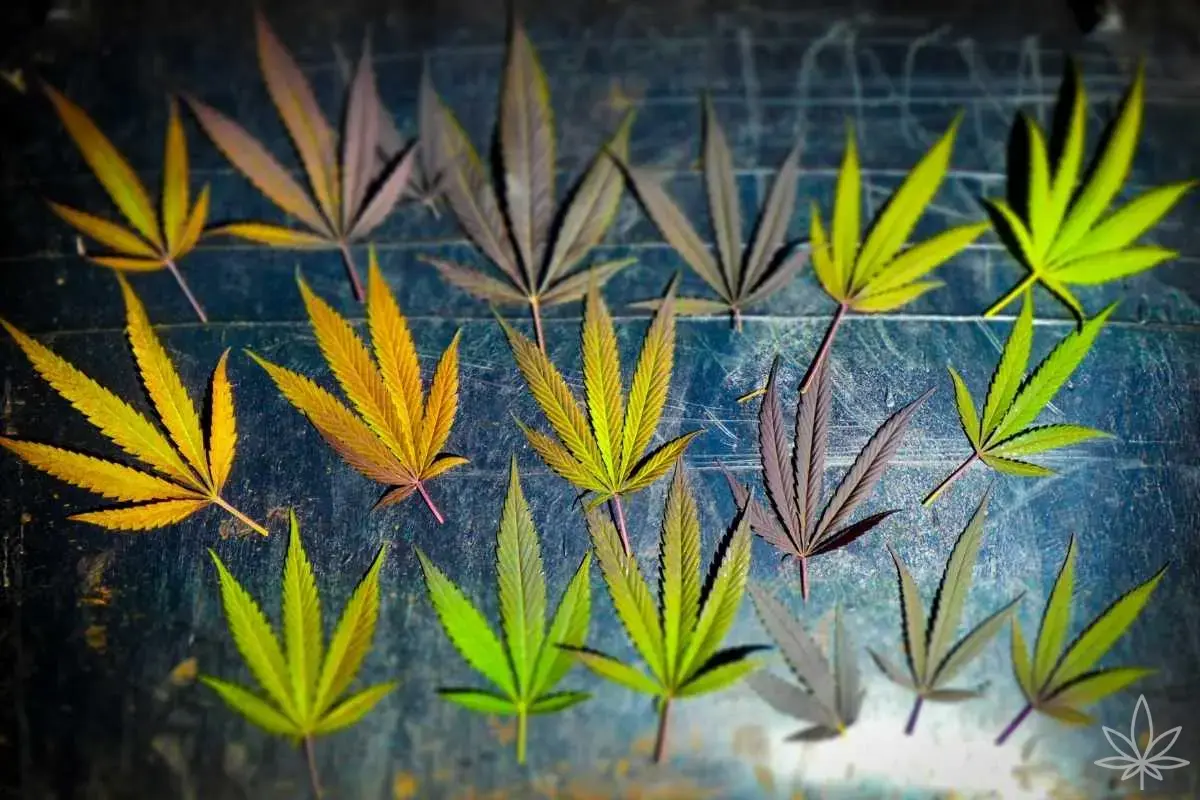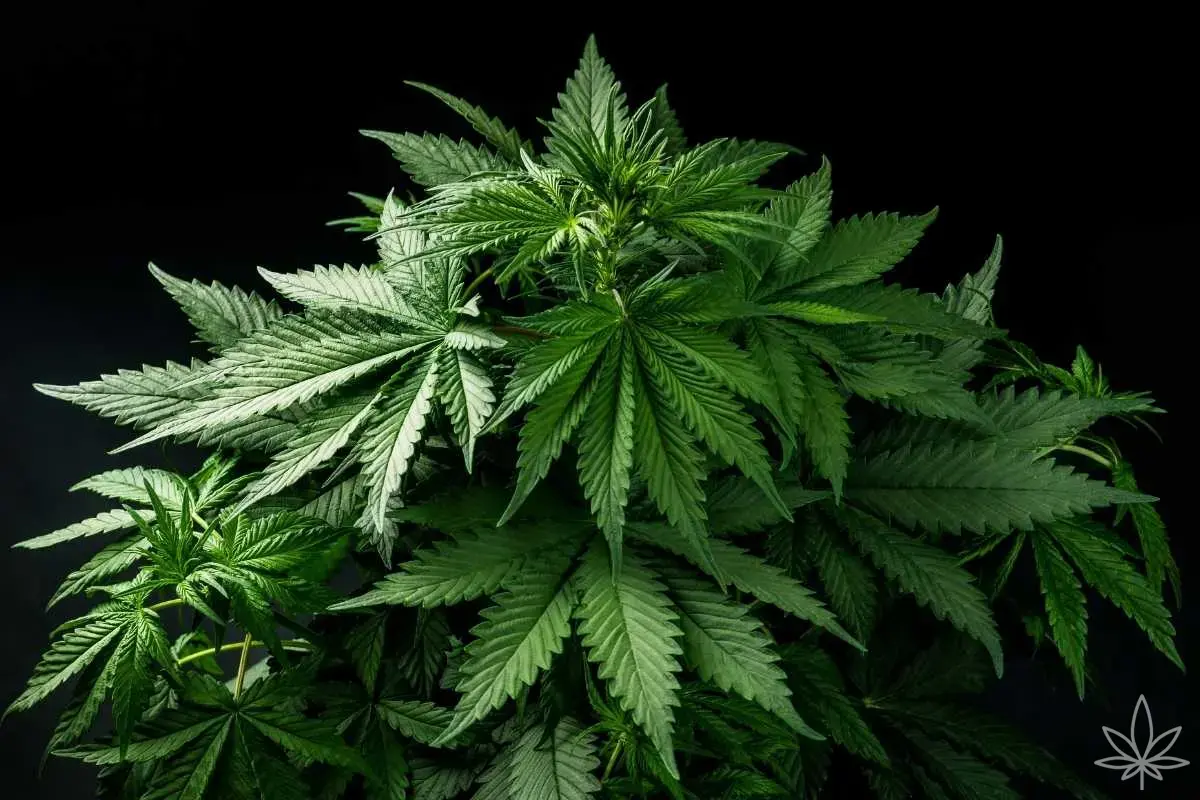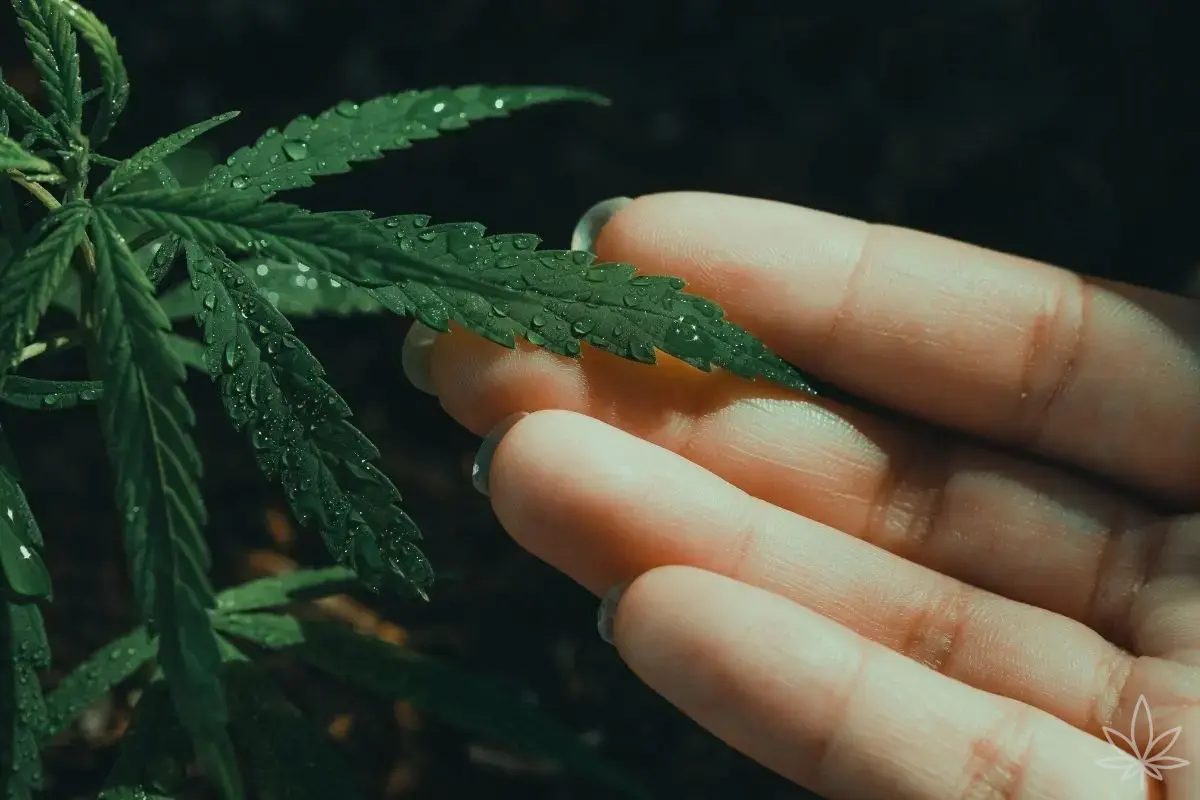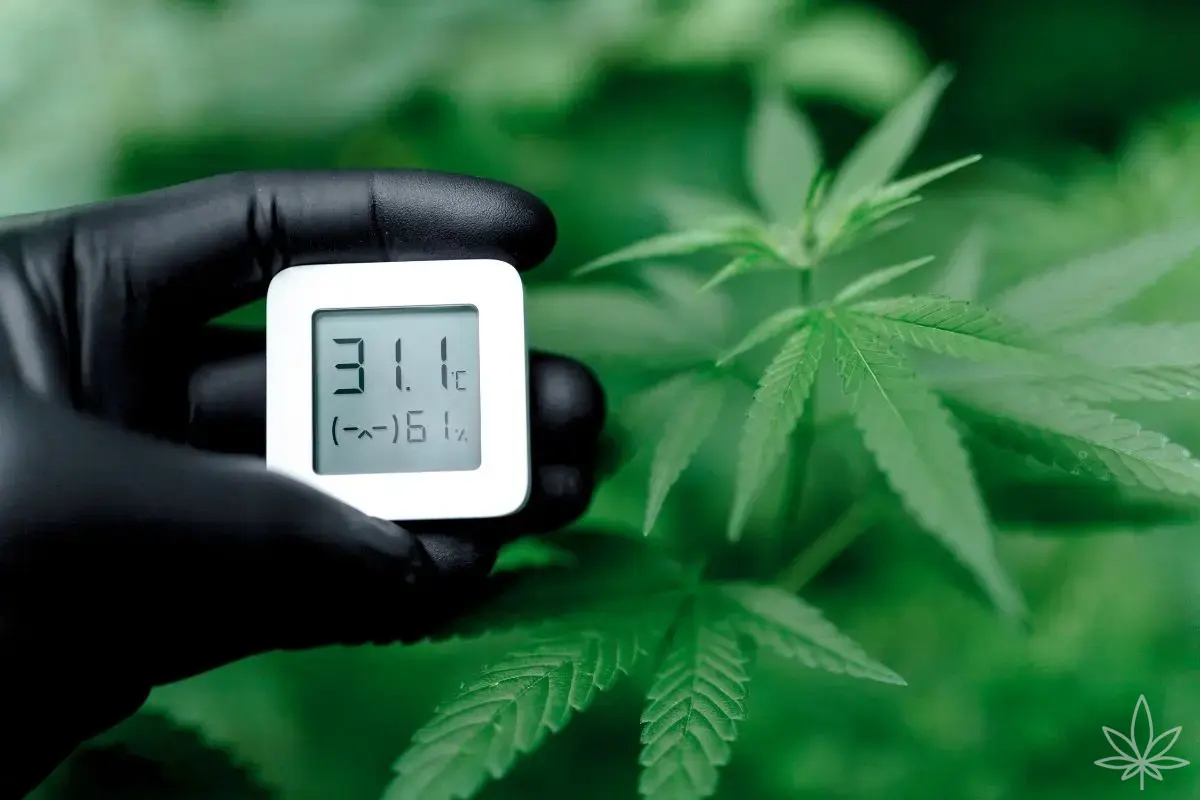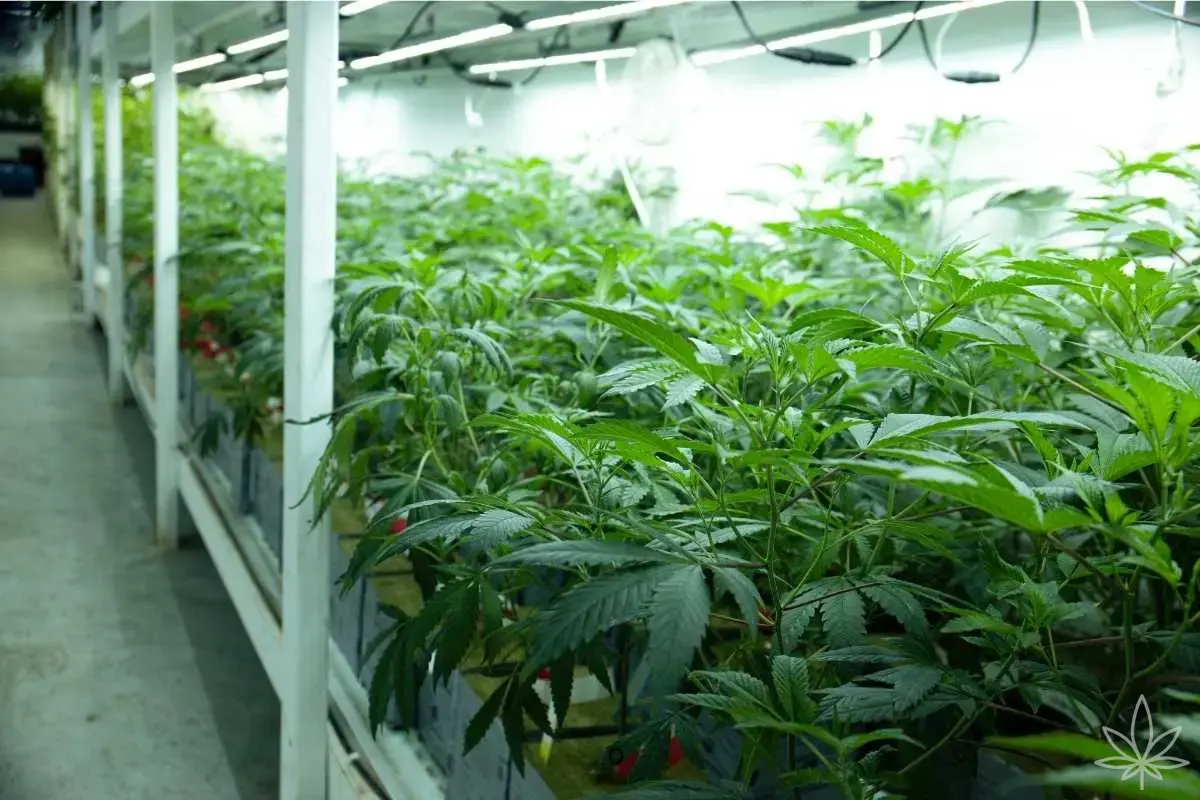Cannabis speaks through its leaves. Before you reach for a “miracle bottle,” get the basics straight: pH, watering, EC, and airflow. Nine out of ten “deficiencies” in soil are really wrong pH, overwatering, salt build-up, or too much light/wind. This is an expanded, comprehensive guide to diagnosing leaf issues when growing cannabis in soil — complete with a pH table, the full list of macro- and micronutrients, and a practical recovery path.
Fast diagnostic path (before you add anything)
- Check input and runoff pH: aim for 6.3–6.8. If you’ve been outside this range for several days, don’t add more nutrients — correct pH first.
- Evaluate watering: pot heavy and cool = too wet (overwatering). Pot “shoebox light” = too dry. Soil should cycle wet → moist → almost dry.
- Note where symptoms start:
- Older/lower leaves → usually a mobile nutrient (N, P, K, Mg).
- Newest growth/tops → usually an immobile nutrient (Ca, Fe, B, Zn, Cu, Mn, Mo).
- Pattern of discoloration:
- Interveinal chlorosis (light between green veins) → Mg, Fe, Mn, Zn.
- Marginal necrosis (browning creeping from edges) → K, Ca, Na/salt, wind/light burn.
- Uniform yellowing → N, S (location decides which).
- EC/salinity: faint “tip burn” = you’re at the feeding limit; wide brown edges + stall = excess/salt build-up.
Golden rule:fix pH and watering first, then adjust nutrition.
Table: nutrient availability in soil vs pH (cannabis)
Legend: HIGH, MED, LOW availability. Target soil pH: 6.3–6.8.
| Nutrient | pH 5.0 | 5.5 | 6.0 | 6.3 | 6.5 | 6.8 | 7.0 | 7.5 |
|---|---|---|---|---|---|---|---|---|
| Nitrogen (N) | MED | HIGH | HIGH | HIGH | HIGH | HIGH | MED | LOW |
| Phosphorus (P) | LOW | MED | HIGH | HIGH | HIGH | MED | MED/LOW | LOW |
| Potassium (K) | MED | HIGH | HIGH | HIGH | HIGH | HIGH | MED | LOW |
| Calcium (Ca) | LOW | LOW/MED | MED | MED/HIGH | HIGH | HIGH | HIGH | HIGH |
| Magnesium (Mg) | LOW | MED | MED/HIGH | HIGH | HIGH | HIGH | MED | LOW |
| Sulfur (S) | MED | HIGH | HIGH | HIGH | HIGH | HIGH | MED | LOW |
| Iron (Fe) | HIGH | HIGH | HIGH | MED | MED/LOW | LOW | LOW | LOW |
| Manganese (Mn) | HIGH | HIGH | HIGH | MED | MED/LOW | LOW | LOW | LOW |
| Zinc (Zn) | HIGH | HIGH | HIGH | MED | MED/LOW | LOW | LOW | LOW |
| Copper (Cu) | MED/HIGH | HIGH | HIGH | MED | MED/LOW | LOW | LOW | LOW |
| Boron (B) | MED | HIGH | HIGH | MED | MED | LOW | LOW | LOW |
| Molybdenum (Mo) | LOW | LOW | MED | MED | HIGH | HIGH | HIGH | HIGH |
Takeaways:
- Low pH (<6.0) restricts Ca/Mg/Mo, causing pseudo-deficiencies even when present.
- High pH (>6.8–7.0) blocks Fe/Mn/Zn/Cu/B, giving pale new growth (chlorosis).
- Sweet spot for soil: 6.3–6.8.
Macros — symptoms, causes, fixes
Nitrogen (N) — the “green motor”
- Mobility: mobile (starts on older leaves).
- Deficiency: even yellowing of older leaves, thinner stems, slowed growth. In bloom, gradual yellowing is normal if it’s orderly.
- Excess (N toxicity): very dark green, leathery leaves, clawed tips, delayed flowering.
- Causes: too little N or too infrequent feeds; or the opposite — too high doses and EC.
- Fix:
- Deficiency: ½ strength grow nutrient, pH 6.3–6.6; keep a water–water–feed cadence.
- Excess: 1–2 plain-water irrigations, then resume at ¾ of the previous dose.
- Prevention: in veg, keep plants lush green but not oversaturated.
Phosphorus (P) — energy & roots
- Mobile.
- Deficiency: dark green foliage with purple/bronze tints (not always), lower leaves dull, plant “stalls.” Cool root zone <18 °C intensifies symptoms.
- Excess: antagonizes Zn/Fe/Mn → upper-leaf chlorosis despite “plenty of food.”
- Fix: lift pH to ~6.5, keep media at 18–22 °C; give a moderate P feed. Avoid overdoing it.
Potassium (K) — water balance & flowering
- Mobile.
- Deficiency:browning of edges/tips on older leaves, necrosis creeping inward, poor stress tolerance, thin stems.
- Excess: suppresses Ca/Mg, creating secondary Ca/Mg issues.
- Fix: hold pH 6.4–6.7; if you’re pushing K in bloom, reduce 10–20% and add Cal-Mag at half strength.
Calcium (Ca) — cell walls
- Immobile (hits new growth).
- Deficiency:ragged margins, tiny necrotic specks on young leaves, deformed tips, weak meristems, hollow/soft tissues in stems. Common under strong LED.
- Excess: uncommon visibly; usually shows as K/Mg uptake issues.
- Causes: pH <6.2, excess K/Na, very soft water lacking Ca, overwatering (weak transport).
- Fix: pH 6.4–6.6, Cal-Mag 0.5–1.0 ml/L for a few irrigations; improve airflow and wet–dry cycling.
Magnesium (Mg) — chlorophyll’s core
- Mobile (older leaves).
- Deficiency:interveinal chlorosis on lower/mid leaves—green veins with yellow “fields”; later tiny rusty dots.
- Excess: rare; can antagonize Ca/K.
- Causes: pH <6.3, ultra-soft/RO water without supplementation, high K.
- Fix:Epsom salt (magnesium sulfate) 0.3–0.5 g/L in irrigation (or 1–2 g/L foliar once or twice), pH 6.4–6.6; ease back K if you’re pushing it.
Sulfur (S) — amino acids & aroma
- Immobile (often upper leaves).
- Deficiency:uniform lightening of new leaves (like N, but starts at the top), thin leaves, sometimes reddish petioles.
- Excess: rare; very high doses stunt growth.
- Fix: usually pH correction and a normal (not heavy) base nutrient dose (most contain S as sulfates).
Micros — symptoms, causes, fixes
Iron (Fe)
- Immobile (hits youngest leaves first).
- Deficiency:lemon-yellow new growth with green veins; older leaves stay green. Common at pH >6.8 or after a high-pH flush.
- Fix: pH 6.3–6.6, add Fe chelate (EDDHA/DTPA) per label; optionally a very mild foliar per product guidance.
Manganese (Mn)
- Immobile.
- Deficiency:fine interveinal chlorosis on newer leaves followed by tiny brown specks; easy to confuse with Fe.
- Excess: uncommon in proper soil pH; looks like dark spotting.
- Fix: pH 6.3–6.6; apply a trace-mix (micros) per label. Avoid high pH.
Zinc (Zn)
- Immobile.
- Deficiency:shortened internodes (stunting), small leaves, interveinal chlorosis up top, bleached tips. Often with pH >6.8 or excess P.
- Fix: pH 6.3–6.6; trace-mix; rein in high phosphorus.
Copper (Cu)
- Immobile.
- Deficiency: young leaves darken/blue-green, curl downward, dry tips possible; rare, usually high pH or Zn excess.
- Fix: correct pH, give micros per label.
Boron (B)
- Immobile.
- Deficiency:deformed shoot tips, brittle/drying meristems, hollow stems, malformed flowers. Often travels with Ca issues (transport).
- Fix: pH 6.3–6.6; trace-mix including B; keep steady moisture (no extremes) as B moves with transpiration.
Molybdenum (Mo)
- Immobile (sometimes mid-leaf symptoms).
- Deficiency:yellowing from the center of the blade; margins may redden; rare but classic at too-low pH.
- Fix:raise pH to 6.5–6.8; trace-mix.
Chlorine (Cl) — minor but real
- Deficiency: very rare; wilting, browning specks, “waterlogged” look.
- Excess (salts/tap):edge burn similar to K/Na, slowdown.
- Fix: if excess suspected — moderate flush (gentle in soil), lighter feeding afterward.
Sodium (Na) — unwanted guest
- Excess: brown edges, salty crust, stalling. Comes from very hard water/table salt (never use!).
- Fix: switch to better-quality water; if cutting with demineralized/RO, re-add Cal-Mag.
Toxicities & lockouts — how to spot them
- Tip burn: a thin brown line at leaf tips = upper feeding limit. Widening brown margins + papery texture = too hot (high EC).
- Salt build-up: dull, tacky leaves, no drive. Use water–water–feed cadence and occasionally water to a light runoff (10–15%).
- pH lockout: “deficiencies” despite high EC. Fix pH first, don’t pile on bottles.
False alarms: this is not nutrition
- Overwatering (root hypoxia): sad leaves but firm stems; cool, heavy soil; arrested growth. Remedy: dry back, airflow at substrate level, less frequent but full irrigations.
- “Brick-dry” drought: soil shrinks from pot walls, water races down the sides. Break the crust and water slowly, in rounds.
- Light/heat stress: top leaves bleach/yellow without a nutrient pattern, tacoing upward, leaf surface hot to the touch. Raise/tilt the light, improve air movement.
- Wind burn: dry, frayed edges on the fan side. Change fan angle/output.
- Pests (thrips, spider mites):silvering/stippling, webbing under leaves, pinholes. Not a deficiency — inspect undersides, use sticky traps and appropriate bio/chem controls.
- Cold water/cold root zone: uptake stalls; P/Mg “ghost” deficiencies. Keep solution at 18–22 °C.
Step-by-step recovery plan (soil)
- Reset fundamentals: input pH 6.3–6.6, solution temp 18–22 °C.
- Irrigate to a light runoff (10–15%) once to even out the root zone (don’t flood).
- Watch 3–5 days. New growth should look better; old damage won’t reverse.
- If it’s a mobile deficiency (N, P, K, Mg) and pH is good: feed ½ strength of the appropriate nutrient next watering.
- If it’s an immobile deficiency (Ca, Fe, Zn, B, Mn, Cu, Mo): correct pH + add a trace-mix/Cal-Mag at low dose; avoid overwatering.
- High EC/toxicity signs: one or two plain-water irrigations, then resume at ¾ of the prior dose.
- Log it: take a photo, note date, pH, and doses — future corrections get easier.
Quick cues (what, where, what it looks like)
- Old leaves yellow evenly:Nitrogen (N).
- Old leaves: brown edges marching inward:Potassium (K).
- Lower/mid leaves: light “fields” between green veins:Magnesium (Mg).
- New leaves: lemon-yellow with green veins:Iron (Fe).
- New leaves: fine interveinal chlorosis + tiny brown freckles:Manganese (Mn).
- New leaves: small, deformed tips, crisping tops:Calcium (Ca) or Boron (B) (often paired).
- Short internodes, tiny leaves, pale tops:Zinc (Zn).
- Very dark, leathery leaves, clawed tips:Excess N.
- Thin brown line on tips:EC limit (back off).
Setting doses without an EC meter (if you must)
- Start corrections at ½ label dose.
- If after 5–7 days the new growth is healthy and symptoms aren’t marching upward, you can raise to ¾.
- If tips toast, cut back 10–20% and extend the water–water–feed cycle.
Watering & feeding cadence in soil (reminder)
The simplest: water → water → water + nutrients. With watering every 2–3 days, you’ll feed about every 6–9 days. High temps, strong LEDs, and big plants may nudge you to slightly more frequent feeds — watch leaf posture and pot weight.
Checklist before “diagnosing with a bottle”
- Input pH 6.3–6.6, runoff 6.3–6.8
- Pot cycles wet–dry properly; no standing water in the saucer
- Good airflow at soil level; no cold draft on leaves
- No pests (loupe, leaf undersides)
- Doses not above ¾ of label (unless you measure EC and know your target)
If all of the above checks out, only then tweak nutrients.
Summary
A leaf “deficiency” is rarely a cry for another bottle. In soil-grown cannabis, the biggest wins come from correct pH (6.3–6.8), a sane watering rhythm, and moderate dosing. Learn the difference between mobile and immobile nutrients, read chlorosis/necrosis patterns, and you’ll move from firefighting to prevention. Your plants will repay you with steady growth, strong stems, and drama-free flowering — and your leaves will stop sending false alarms.

